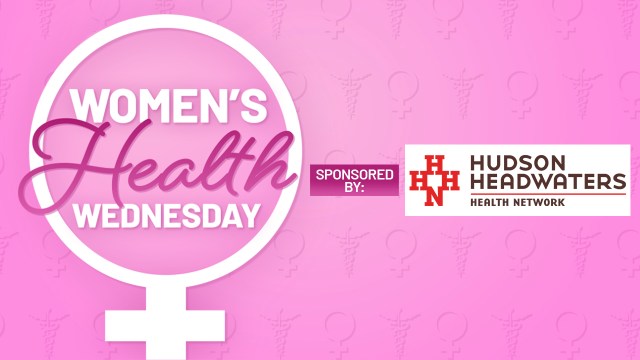
While the quality of U.S. healthcare and patient outcomes has generally increased over time, access to care — and thus to positive patient outcomes — is not equitable to all people. Overall, one in 10 Americans don’t have health insurance, which is fallout of a system breaking under the weight of high costs and deepening complexity.
Diabetes rates are more than 30% higher among Native Americans and Latinos than among Whites. Rates of death attributable to heart disease, stroke, and prostate and breast cancers remain much higher in black populations.
If you live in a rural area and have a chronic disease (or multiple diseases) provider options are more limited than in densely populated areas. That means availability of a specialist or even the ability to get an appointment can be a challenge.
There are many other variables that impact healthcare access and equity: socioeconomics, technology, gender, language barriers and more. These factors are further complicated by an individual’s specific care needs.
Simply put, people without adequate healthcare insurance coverage or proximity to quality care don’t have the same opportunities to access care and their overall health may be adversely affected.
Making things worse, the U.S. healthcare system continues to be extremely difficult to navigate and is fraught with administrative burden. When it is easier and faster to access most basic human needs than it is to visit a care provider, change is necessary. In the search for meaningful solutions to these inequities, women’s health and technological investment are clear places to start.
The case for greater access
Though the U.S. healthcare system does have its faults, we are a global leader in research, teaching, care standards, and clinical outcomes. According to the World Index of Healthcare Innovation, the U.S. healthcare system ranked sixth for innovation in 2021 but third to last in fiscal stability. That’s what makes access and equity issues frustrating. As care providers, collectively we know we can be doing more for more patients if our systems made delivery and access to care easier.
In an ideal world, adequate access to healthcare would mean that everyone is able to receive the care they need in a timely manner and in a way that supports their best personal outcome. That includes seeing a provider quickly and at a reasonable cost. Increased access to preventive care would have an exponential benefit for individuals and for the healthcare system as a whole. Missed prevention opportunities alone cost the U.S. $55 billion every year. When considering physical therapy as a frontline musculoskeletal intervention, research shows up to 26% cost savings at over $1500/patient.
Access issues aren’t limited to visiting a doctor. Frontline and preventative health services such as physical therapy are also compromised. As Medicare reimbursement rates for ancillary services such as PT continue to decline, providers and patients are caught in the conflict. Our purpose is to help people maintain and get back to their best physical health while running a national practice that relies on margin growth to combat macro trends and invest for the future.
Access follows reimbursement and the services covered by insurance companies. If providers aren’t able to deliver services within business limitations, contraction of services may result. Business models reliant on economies of scale may be forced to withdraw from more rural and remote areas where demand for services is limited. That means even less access for people in rural communities, and the cycle continues.
Alternatively, if reduced reimbursement is passed along to patients in the form of higher premiums or out-of-pocket cost, fewer people will seek or be able to afford care, further restricting access for the uninsured and the underinsured. When faced with spending limited household dollars on food and housing vs. non-urgent medical care, the care will lose out every time — resulting in a less healthy population.
Make women’s health a priority
Women comprise half the world’s population but account for 80% of purchasing decisions in the healthcare industry. And yet, women’s health is considered a niche market and a subset of healthcare. Promoting women’s health is the single most impactful change we could make as women play a disproportionate role in how and when others access care.
When I was at Brigham and Women’s Hospital, I saw firsthand that improving the health of all women could improve the health of an entire community or population. As advisors to many on where and when to receive care, we rarely acknowledge the strong influence and impact women have on the general wellbeing of their family and acquaintances. Unfortunately, many women often put the care of others ahead of their own.
In our roles as mothers, daughters, partners and more, we naturally care for others and need to do the same for ourselves. In fact, 76% of American women spend up to 10 hours daily caring for partners, spouses and/or children, and one in five (19%) women spend more than 10 hours a day caring for others. If women are the influential guide for many to access healthcare, we must work harder to promote the health of all women. Our ability to play the role of care facilitator for others depends upon it.
Plenty more we can do
Beyond women’s health, we must identify workable solutions to other systemic inequities in the healthcare system. We must reverse the negative trend that declining reimbursement rates are having on preventative care and overall access to services such as physical therapy.
Technology is another unlock to better healthcare access. These innovations span advancements to how, when and where care is delivered. The Covid-19 pandemic showed us the power and potential of virtual care delivery to improve access, via telehealth video or telephonically. As we think about geographic limitations that place a premium on availability of quality care, telehealth can play an outsized role in serving these populations.
In addition, telehealth can improve patient outcomes through advanced monitoring, cognitive affordances, clinical decision-support functions, and execution of life-saving and evidence-based critical care protocols, just to name a few innovations. The first step in continuing the development and advancement of telehealth is for the private and government payers to permanently cover these services and to set reimbursement rates at parity with in-person fee schedules.
We can do more to remove cost and complexity within the healthcare system, balanced with improving access to care for those who struggle to get the care they need. As providers, we must continue to identify and remove barriers to care whenever possible.
We owe it to our patients.






